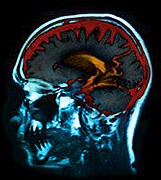
FRIDAY, Sept. 2 (HealthDay News) — Researchers using scanning technology say they discovered physical differences in the brains of older children with autism compared to those of kids without autism.
“We could discriminate between typically developing and autistic children with 92 percent accuracy,” based on the volume of gray matter in one part of the brain, Lucina Uddin, first author of a new study and instructor in psychiatry and behavioral sciences at Stanford University School of Medicine, said in a university news release.
However, there are some limitations to the study. The researchers only looked at kids aged 8 to 18, and they didn’t capture images of the children’s brains before they were diagnosed with autism. And the findings don’t appear to have an immediate effect on how children with autism are diagnosed or treated.
The study authors reached their findings after comparing MRI scans of the brains of 24 children with autism with those of 24 children the same age who had developed normally.
The investigators found that the children with the disorder who had the most difficulty communicating with others had the biggest differences in the structures of their brains compared to other kids.
In the United States, about one in 110 children has autism, a developmental disorder that interferes with language skills, social interactions and self-awareness. The traditional method of diagnosing an autism spectrum disorder is through observation and a variety of tests.
Commenting on the findings, Dr. Andrew Adesman, chief of developmental and behavioral pediatrics at the Steven and Alexandra Cohen Children’s Medical Center of New York, said that the study doesn’t affect diagnosis or treatment of autism. Still, it marks a step toward understanding how autism develops, he added.
“What might be helpful, in theory, is that if a child is born as a sibling in a family with an increased risk for autism . . . to know in advance if that person is indeed going to have autism,” said Adesman. “Maybe one could intervene sooner,” he noted.
The study appears in the Sept. 2 online edition of the journal Biological Psychiatry.
More information
The U.S. Centers for Disease Control and Prevention has more about the signs of autism.

